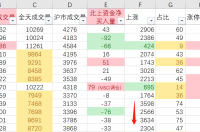
铜元,是我国清末民初以来所铸各种新式铜币的通称,俗称铜板,是我国近代货币体系的重要组成部分。我国铜元诞生于清朝光绪二十六年(1900年),铜元与历代的方孔铜钱不同,中间无孔,系仿照香港铜辅币铸造而成的。它的诞生,标志着我国金属货币铸造工艺从传统的手工翻砂铸造进入了先进的机器化生产的新阶段。
中华民国二十六年一分
民国二十六年,国民政府开始铸造发行以分为单位的机制铜圆,这种铜圆作为法币的辅币进行流通。主要图案以方足布和青天白日旗为主,边饰以回纹,形制整齐划一,是我国铜圆史上发行的规范化铜圆。
该钱币是由上海中央造币厂于民国时期铸造,材料为红铜。由于民国时期我国战乱不断,中华民国二十六年壹分损失较为惨重,能完好无缺保存下来的十分稀少,乃凤毛麟角的存在,因此收藏价值极佳。
袁大头 是民国时期主要流通货币之一,“袁大头”是对袁世凯像系列硬币的口语俗称,严谨点说叫“袁世凯像背嘉禾银币”。北洋政府为了整顿币制,划一银币,于民国三年(1914年)二月,颁布《国币条例》十三条,决定实行银本位制度。《国币条例》规定:“以库平纯银六钱四分八厘为价格之单位,定名为圆”,“一圆银币,总重七钱二分,银八九,铜一一”,“一圆银币用数无限制”,即以一圆银币为无限法偿的本位贷币。根据这一规定,于1914年12月及1915年2月, 先后由造币总厂及江南造币厂开铸一圆银币,币面镌刻袁世凯头像,俗称“袁头币”或“袁大头”。
清朝灭亡之后, 1912年4月袁世凯出任大总统。北洋政府鉴于当时铸币、纸币十分复杂,流通的中外货币在百种以上,规格不一,流通混乱,折算繁琐,民众积怨,同时也想借助货币改制以解决军费问题,便决定铸发国币。袁世凯为了提高自己的统治地位,把他的头像铸于币面,“袁大头”由此而来。
民国三年袁大头
袁大头中的极品民国三年袁大头,这一年的袁大头发行量最少,因为他在当时是一个错版的存在,一般的袁大头都是七个字,多了一个‘造’字,在所有袁大头中只有民国三年的袁大头是没有造字的,民字是多一点的,这也是与其它钱币很大的一个区别,我们可以看到袁大头人像胸前与内齿接触的地方是少一个内齿的,这也是内行人鉴定钱币真假重要的一点,这枚钱币整圈就少这一个内齿,当时的目的就为了来防伪的,而后期仿制的钱币是没有注意到这个细节的。
背嘉禾二本,左右交互,下系结带,中铸“壹圆”二字。这些年,在银元收藏界,有一个名字,始终不乏耳闻,那就是“袁大头”,特别是这几年,随着金银价格走强以及市场的火爆,许多老银元的市场价格都有了多倍的涨幅,其中部分版本特殊,品相良好,存世稀少的珍品,更是不可估量。
此币为民国十六年为纪念孙中山和中华民国政府复都南京而铸造发行。1927年即中华民国十六年,由国共两党合作并发起的讨伐北洋军政府的北伐战争已经奠定了胜局,北洋军阀统治集团遭受了沉重打击。是年中华民国政府复都南京,国民政府有关部门为顺应民意,拟定停铸“袁大头”并开铸孙中山像银币,此币正是为了纪念国民政府复都南京而正式铸造发行的。由奥地利造币厂代为铸模。
民国十六年造孙中山像陵墓壹圆
银币正面为孙中山正面肖像,肖像周围环绕“中华民国国民政府”八字,背面中央铸“壹圆”字样,背景为国民政府总统府图案。由于国民政府刚刚复都南京,百废待兴,铸行银币的人力物力极为有限,再加上时间仓促,所以铸额很小,仅供馈赠有关人士纪念之用,存世极稀。银币运用西洋浅浮雕技法刻模,人物栩栩如生,堪称银币设计和铸造中的精品。同年国民政府在南京钟山建造了中山陵,所以很多人认为该银币背面的图案为中山陵,故亦称此银币为孙中山陵园纪念银币,实际为设计中的中华民国国民政府的总统府图案。
钱范是古代铸造 金属货币 的模子,一般称为钱模。早期钱范的钱模直接刻划在石、铜质的范材上,也有用陶质刻划的。
银锭钱 范
这个铜钱范,表面刻有纹银的文字,是银锭表面文字成形的主要模具,而钱范在古代也是极为稀少的,流传至今极为罕见,此银锭钱范,品相完美,文字清晰,具有不可估量的收藏价值。
李鸿章(1823年2月15日-1901年11月7日),晚清名臣,洋务运动的主要领导人之一,安徽省合肥人,世人多称“李中堂”,因行二,故民间又称“李二先生”。本名章铜,字渐甫或子黻[fú],号少荃(泉),晚年自号仪叟,别号省心。
李鸿章书法
常言道:诗言志,其实书与画又何尝不是在“言志”呢!鉴赏或赏析历史人物和书画艺术作品,必须将“作品”放到“历史人物”所在的时代并结合此“历史人物”人生履历中不同阶段的心态,去评议、去研究,方可得到真缔。这也是李鸿章此两件书法作品赏析中,给人的一种深层次的文化启迪!其品相完美,极具收藏价值。
英文翻译 :Copper yuan, is the general name of all kinds of new copper coins cast since the late Qing Dynasty and the early Republic of China, commonly known as copper plate, is an important part of the monetary system in modern China. The Chinese copper yuan was born in the 26th year of Guangxu Dynasty (1900). The copper yuan is different from the square hole copper coins in the past dynasties. It has no hole in the middle and is minted after the Hong Kong copper coin. Its birth indicates that Chinese metal currency foundry technology has entered a new stage from the traditional manual foundry technology into the advanced machine production.
Republic of China 26 minutes
In the 26th year of the Republic of China, the National government began to mint and issue copper circles divided into units, which were circulated as legal coins. The main pattern is mainly square foot cloth and blue sky flag, and the edge is decorated with patterns, and the shape and system are uniform. It is the standardized copper circle issued in the history of Chinese copper circle.
The coin was minted by the Shanghai Central Mint in the Republic of China, and the material is red copper. Due TO THE CONSTANT WARS IN THE REPUBLIC OF China PERIOD, ONE CENT LOSS OF REPUBLIC OF China 26 YEARS IS RELATIVELY HEAVY, AND THIS KIND OF PRESERVATION IS VERY RARE, SO IT IS STILL LITTLE, THEREFORE THE COLLECTION VALUE IS EXCELLENT.
Yuan Datou is one of the main currencies in circulation in the period of the Republic of China. "Yuan Datou" is the colloquial name for Yuan Shikai"s series of coins, which is called "Yuan Shikai"s Jiahe silver coin". In order to rectify the currency system, the Beiyang government drew a silver coin. In February of the third year of the Republic of China (1914), it promulgated the Article 13 of the National Currency Regulations and decided to implement the silver standard system. According to the Regulations on National Currency, "the unit of price of Kuping sterling silver is six cents, four cents and eight cents, and it is named as the circle", "A silver coin has a total weight of seven cents and two cents, eight cents and nine cents of silver and one copper", and "a silver coin can be used in unlimited quantities", that is, a silver coin is used as the standard loan currency for infinite compensation. According to this regulation, in December 1914 and February 1915, a silver coin was cast by the General Mint and Jiangnan Mint successively, and the coin surface was engraved with the head of Yuan Shikai, commonly known as "Yuan Tou coin" or "Yuan Datou".
After the fall of the Qing Dynasty, Yuan Shikai became president in April 1912. In view of the complexity of coinage and paper money at that time, with more than 100 kinds of Chinese and foreign currencies in circulation, different specifications, chaotic circulation, cumbersome conversion, and resentment among the public, the Beiyang government also wanted to solve the military expenditure problem by means of currency reform, so it decided to mint and issue national coins. In order to improve his ruling status, Yuan Shikai had his head cast on the coin, and the name "Yuan Datou" came from this.
Yuan Datou in the third year of the Republic of China
Big head, big head in need three years of the republic of China yuan yuan this bulk circulation of at least one year of yuan, because he was a wrong version of the existence of general yuan big head is seven words, more than a "made" word, in only three years of the republic of China of all bulk yuan yuan big head there is no word, word is a bit more, this is also with the rest of the money, a big difference between We can see that the contact place between Yuan Datou"s portrait and the inner tooth is less than one inner tooth, which is also an important point for professionals to identify the authenticity of coins. The whole circle of this coin is less than one inner tooth. The purpose at that time is to prevent counterfeiting, and the later imitation coins do not pay attention to this detail.
Back Jiahe two, left and right interaction, under the knot belt, cast "one circle" two words. Over the years, in the silver collection area, has a name, is not always hear, that is "big head" yuan, especially in recent years, as the gold and silver price strength and market, and many there were more than the market price of the old silver dollar rise, some of these special version, good appearance, only rare treasures, is immeasurable.
This coin was minted and issued in the 16th year of the Republic of China to commemorate Sun Yat-sen and the restoration of the capital of the Republic of China in Nanjing. In 1927, the 16th year of the Republic of China, the Northern Expedition War launched by the cooperation of the Kuomintang and the Communist Party against the Beiyang military government had already established the victory, and the Northern warlord ruling group suffered a heavy blow. In 2005, the government of the Republic of China restored the capital of Nanjing. In order to comply with the public opinion, relevant departments of the national government planned to stop casting "Yuan Datou" and cast a silver coin like Sun Yat-sen. This coin was officially minted and issued in order to commemorate the restoration of the capital of Nanjing by the National government. The mold was cast by the Austrian Mint.
Sixteen years in the Republic of China made Sun Yat-sen like a tomb one circle
The front of the silver coin is a portrait of SUN YAT-SEN, surrounded by the "National GOVERNMENT of the Republic of China" eight characters, the back of the central cast "One circle", the background is the national government presidential palace design. Due to the fact that the National government had just restored the capital of Nanjing, and the waste was waiting for revival, the manpower and material resources for casting silver coins were extremely limited, and the time was short. Therefore, the amount of silver coins cast was very small, which was only used as a gift for the relevant people to commemorate, and it was very rare in the world. The use of Western low relief techniques of silver coins, the characters are lifelike, can be called the design and casting of silver coins in the boutique. In the same year, the Nationalist government built the Sun Yat-sen Mausoleum in Nanjing Zhongshan, so many people think that the pattern on the back of the silver coin is the Sun Yat-sen Mausoleum commemorative silver coin, which is actually the design of the presidential palace of the National government of the Republic of China.
Qian fan is an ancient mold for casting metal money, commonly known as money mold. In the early period, the money mold of Qian Fan was engraved directly on stone and copper materials, and also on pottery.
Pieces of silver Qian Fan
The copper coin fan, the surface engraved with silver grain of the text, is the surface of the silver ingots forming the main mold, and the money fan in ancient times is also extremely rare, spread to the present is extremely rare, this silver ingots money fan, perfect appearance, clear text, has immeasurable collection value.
Li Hongzhang (February 15, 1823 -- November 7, 1901) was a famous minister in the late Qing Dynasty and one of the main leaders of the Westernization movement. He was born in Hefei, Anhui Province. He was widely known as "Li Zhongtang" in the world. The original name was Zhang Tong, the initials were Tsiu-fu or Zi Fu [Fu], the alias was Shao Quan (spring), and the alias Yi Sou was Fu Fu in his later years.
Calligraphy by Li Hongzhang
As the saying goes: poetry and ambition, in fact, books and paintings are not in "ambition" it! Appreciation or appreciation of historical figures and works of painting and calligraphy must be placed in the era of "historical figures" and combined with the mentality of different stages in the life history of this "historical figures", to evaluate and study, so as to get the true association. This is also the appreciation of Li Hongzhang"s two calligraphy works, give people a deep cultural enlightenment! Its appearance is perfect and has great collection value.




